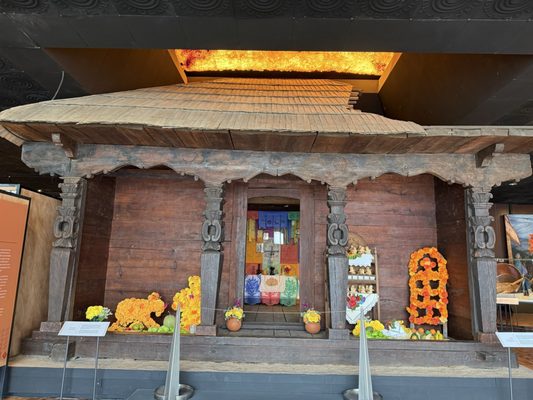Museo Nacional de Antropología
World's largest collection of ancient Mexican artifacts
Information
Av. P.º de la Reforma s/n, Polanco, Bosque de Chapultepec I Secc, Miguel Hidalgo, 11560 Ciudad de México, CDMX, Mexico Get directions
World's largest collection of ancient Mexican artifacts





























Av. P.º de la Reforma s/n, Polanco, Bosque de Chapultepec I Secc, Miguel Hidalgo, 11560 Ciudad de México, CDMX, Mexico Get directions

"This massive building in Chapultepec Park is the most well-known museum in Mexico City (second only to the Museo Frida Kahlo). Though it was designed in 1964 by late Mexican architect Pedro Ramírez Vázquez, the mammoth concrete building still looks as avant-garde today as it did then. (How exactly does that giant concrete slab float above a pond?) The architecture is perhaps as impressive as the exhibits; some people come just to see the building. The museum is home to the world's largest collection of ancient Mexican artifacts, spread across 23 rooms. Some of the most iconic Mesoamerican artifacts discovered to date can be found here. If you want to understand Mexico's history, then a visit here is a must." - Scarlett Lindeman, Susannah Rigg

"This massive building in Chapultepec Park is the most well-known museum in Mexico City (second only to the Museo Frida Kahlo). Though it was designed in 1964 by late Mexican architect Pedro Ramírez Vázquez, the mammoth concrete building still looks as avant-garde today as it did then. (How exactly does that giant concrete slab float above a pond?) The architecture is perhaps as impressive as the exhibits; some people come just to see the building. The museum is home to the world's largest collection of ancient Mexican artifacts, spread across 23 rooms. Some of the most iconic Mesoamerican artifacts discovered to date can be found here. If you want to understand Mexico's history, then a visit here is a must." - Scarlett Lindeman


"Holding some of the most significant relics of Mesoamerican civilization, this museum pairs its collection with transportive bilingual captions and images. Grouped by pre‑Hispanic culture, can’t‑miss pieces include the Aztec sun stone—the massive carved disk often mistaken for a calendar—and the colossal heads of the coastal Olmecs, with their distinctive broad noses and plaintive eyes." - The MICHELIN Guide

"A major museum showcasing extensive collections on pre-Hispanic and indigenous cultures, highlighted as a must-see for visitors interested in history and archaeology." - Patricia Doherty Patricia Doherty Patricia Doherty is a writer who specializes in covering destinations, resorts, and cruises for Travel + Leisure and other publications. Travel + Leisure Editorial Guidelines

"I can visit the Museo Nacional de Antropología in Mexico City, highlighted as one of the major museums located in Chapultepec Park." - Patricia Doherty Patricia Doherty Patricia Doherty is a writer who specializes in covering destinations, resorts, and cruises for Travel + Leisure and other publications. Travel + Leisure Editorial Guidelines